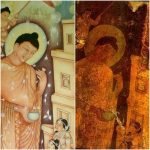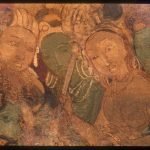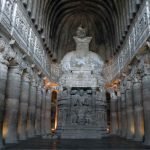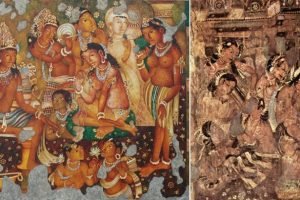Amidst the Covid-19 surge that took over India in mid-2020, an ancient & precious archaeological treasure of Maharashtra was quietly launched into the ‘future world history’, but the momentous event was virtually overlooked in the country as observed by Vedan Choolun
Maharashtra’s celebrated Ajanta Caves in Aurangabad, became the first-ever UNESCO World Heritage Site to ‘virtually enter’ the Arctic World Archives (AWA) on Norway’s Svalbard Island, in November 2020.
As a matter of fact, Prime Minister Narendra Modi also referred to the Svalbard Isle distinction in his ‘Mann Ki Baat’ (Nov 2020) but owing to the COVID-19 crisis, this achievement skipped public attention.
The AWA honour was possible by the efforts of two companies – Sapio Analytics, Mumbai and Ajantahc, London, IITs, several Indian universities, besides the pictures taken by the famous photographer Mr.Benoy Behl, using a new ‘zero-light technology’.
According to CEO Ashwin Srivastava of Sapio Analytics to key media sources “There are roughly 650 sqmts (or, 10,00,000 sq. in.) of paintings in 30 caves, with four caves considered ground-breaking in terms of their artistic value at Ajanta”.
Ajantahc’s Director and Co-Founder Vedan Choolun said that of these barely 10 sqmts (or, 16,000 sq. in.) have so far been reinstituted using AI-aided digital methods.
Ashwin Srivastava said that persistent endeavours are actively running to boost the preservation process ahead to ensure it happens faster. Ajanta Caves, ‘rediscovered’ 202 years ago in April 1819 by a British officer John Smith race against time for survival.
Various teams of photographers, archaeological surveyors & restoration artists, engineers etc. have come together to prepare striking ultra-modern ‘digital images’ of the ancient but incredible art works & finely carved colour paintings adorning the walls and ceilings of the Ajanta Caves from around 2 BC are over 2200 years ago.
Since many of the carvings have been destroyed to great extent, the companies have a state of art technology empowered digitalized restoration process using Artificial Intelligence (AI) developed by scientists from various Indian universities, including IIT Roorkee.

Vedan Choolun and Ashwin Srivastava said that the digital restoration does not affect the original artworks, infact refines it with more finesse while working on the defaced paintings. It is vital to restore the ancient Indian cultural heritage for future generation to admire
“We select a mutilated area of the mural through image processing-based identification using YOLO Machine Learning Model, restored it by modifying the pixels of the mutilated elements through mathematical deduction of the nearby safely intact parts,” Srivastava explained.
High-end pixel-level scanning of documented pictures of the original artwork are used for the digitalization process using highly integrated deep learning algorithms.
Ashwin Srivastava added that the deep knowledge was derived from extremely difficult manual digital restorations done by art historians like Mr. Benoy Behl, and with the AI technique, the team has been able to extract and design an ‘academic catalogue of jewelleries’ used thousands of years ago!
Experts have termed the outcome of this unique combination of manual digital restoration and AI-trained revitalization as “excellent”, with persistent efforts to perfect the method for even superior results, said Vedan Choolun.
The challenges, he said, involves diametrically opposite dimensions like ‘heritage versus digitization’, ‘history versus artificial intelligence’, belonging to the era of yore vis-à-vis the future.
“Yet, AI is helping digitally preserve these 2,200-year-old Ajanta Cave paintings and now they could last for many lifetimes, safe from all kinds of disasters, for the benefit of future generations,” Vedan Choolun said with pride.
The two companies have also joined hands to digitize, restore and preserve for eternity ancient Indian heritage, besides promoting contemporary Indian artists to the global audience, thus positioning itself as the ‘custodian of Indian culture’.
The “Renunciation of King Mahajanaka” – highlighting the emotions of the legendary King about to sacrifice worldly pleasures and enabling us to reflect on our ancient beginning – is safe in the bosom of the AWA, situated deep inside a remote, icy Arctic mountain, 970 kms from the North Pole, and declared a demilitarized zone by 42 countries.
It is considered an ideal, secure setting where nothing – natural or human disasters nor Time itself – can touch these artefacts in their digitized format, and maybe millennia later, future generations would marvel at them with pride, great pleasure and admiration.
















Add Comment